Papers by Andrew McClellan
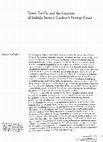
American Art, 2024
Taxes, Tariffs, and the Creation of Isabella Stewart Gardner's Fenway Court A case could be made ... more Taxes, Tariffs, and the Creation of Isabella Stewart Gardner's Fenway Court A case could be made for the Isabella Stewart Gardner Museum as the definitive American "personal art collection museum," to borrow art historian Anne Higonnet's term. 1 This formulation aptly captures the blended identity of Gardner's creation, which opened to the public as a museum in 1903 yet featured an intimate, quasidomestic atmosphere (frontispiece, fig. 1). In this way, it differs markedly from its near-contemporary neighbor, the Museum of Fine Arts (hereafter MFA), which relocated from downtown Boston to the Fenway in 1909. Still largely unchanged since Gardner's death in 1924, her collection and its home are now a cultural landmark. Gardner's colorful life and legendary exploits are also well-documented in numerous biographies. 2 What has gone overlooked is that her institutional vision had to overcome various hurdles, specifically taxes and tariffs, which threatened its realization. To avoid local taxes and customs duties on imported art, she made creative use of the law granting tax exemptions to educational organizations and she resorted to deceptive practices, including smuggling. When those efforts were revealed, the ensuing controversies likewise shaped her already divided reputation; some saw her as a determined free spirit while others decried her abuse of wealth's privileges. Gardner's clashes with the authorities also disclose the prices she paid, literal and psychic, to fashion her singular institution. Though Gardner never recorded her aesthetic intentions, Fenway Court, as her house-museum was known in her lifetime, with its idiosyncratic blend of paintings, sculptures, furniture, and assorted decorative arts housed in an environment animated by the life forces and domestic pleasures of plants, music, conversation, food, and contingencies of natural light, offered a strong contrast to the established museums of her day, including the MFA (where her husband John [Jack] Lowell Gardner was a trustee and treasurer before his death in 1898). While destined as a memorial to herself and gift to the cit of Boston, during her life Fenway Court doubled as a semi-public museum and pe~onal residence where she entertained friends and a steady stream of distinguished uests. This essay argues that scrutiny of her handling of tariffs and taxes shines new fight on Isabella Stewart Gardner's ambitions and appreh.ensions, motiv~s and machi-. The museum often reiterates her declared commitment to creating a museum nauons.. ,,. for "the education and enjoyment of the public forever, a commitment she honored through her bequest; while she was alive, however, the situation was more complicated than the museum's celebration of her plan acknowledges. 3
Maria Cosway: The exceptional journey of an artist, 2024
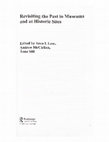
Revisiting the Past in Museums and at Historic Sites, 2022
Revisiting the Past in Museums and at Historic Sites demonstrates that museums and historic sp... more Revisiting the Past in Museums and at Historic Sites demonstrates that museums and historic spaces are increasingly becoming ""backdrops"" for all sorts of appropriations and interventions that throw new light upon the objects they comprise and the pasts they reference.
Rooted in new scholarship that expands established notions of art installations, museums, period rooms, and historic sites, the book brings together contributions from scholars from intersecting disciplines. Arguing that we are witnessing a paradigm shift concerning the place of historic spaces and museums in the contemporary imaginary, the volume shows that such institutions are merging traditional scholarly activities tied to historical representation and inquiry with novel modes of display and interpretation, drawing them closer to the world of entertainment and interactive consumption. Case studies analyze how a range of interventions impact historic spaces and conceptions of the past they generate. The book concludes that museums and historic sites are reinventing themselves in order to remain meaningful and to play a role in societies aspiring to be more inclusive and open to historical and cultural debate.
Revisiting the Past in Museums and at Historic Sites will be of interest to students and faculty who are engaged in the study of museums, art history, architectural and design history, social and cultural history, interior design, visual culture, and material culture.
Anca I. Lasc is Associate Professor of Design History in the History of Art and Design Department at Pratt Institute, USA.
Andrew McClellan is Professor of Art History at Tufts University, USA.
Änne Söll is Full Professor for Modem Art History at Ruhr-Universitat Bochum, Germany.
Art and its Publics, 2003
New Interventions in Art History is a series of textbook mini-companionspublished in connection w... more New Interventions in Art History is a series of textbook mini-companionspublished in connection with the Association of Art Historians-that aims to provide innovative approaches to, and new perspectives on, the study of art history. Each volume focuses on a specific area of the discipline of art history-here used in the broadest sense to include painting, sculpture, architecture, graphic arts, and film-and aims to identify the key factors that have shaped the artistic phenomenon under scrutiny. Particular attention is paid to the social and political context and the historiography of the artistic cultures or movements under review. In this way, the essays that comprise each volume cohere around the central theme while providing insights into the broader problematics of a given historical moment.
Journal of Curatorial Studies, 2012
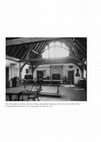
Journal of Curatorial Studies, 2021
This article seeks to identify impediments to, as well as opportunities for, change in American a... more This article seeks to identify impediments to, as well as opportunities for, change in American art museums in the face of demands for social justice and greater inclusivity. Focusing specifically on the representation of American art in wellestablished encyclopaedic museums, I argue that inherited collections and taxonomies, mapped onto the physical spaces of museums, limit the speed and degree to which aesthetic priorities, values and narratives may adapt in order to meet shifting demographics and visitor expectations. In effect, the challenge for many museums is to confront and navigate an institutionalized form of white supremacy baked into their intellectual and material foundations. I end by analysing several recent strategies that have aimed at dismantling conventions and complicating the canon. Across the museum world in the United States, the year 2020 will be remembered for the deleterious impact of the COVID-19 pandemic and the emancipatory force of the Black Lives Matter movement (BLM), forcing an overdue reckoning with how pre-eminent cultural institutions can foster a more diverse and inclusive workforce, environment, public face and message. On the far side of the pandemic, museums-those that survive the economic impact of COVID-will no doubt have issues of social justice, equity, diversity and
Sculpture Collections in Europe and the United States 1500-1930, 2021
Documents the acquisition and display history of Alceo Dossena's most notorious forgery at the MF... more Documents the acquisition and display history of Alceo Dossena's most notorious forgery at the MFA Boston
The Art Museum, 2008
A historical overview of restitution and repatriation in Western art museums beginning with the f... more A historical overview of restitution and repatriation in Western art museums beginning with the foundation of the Louvre during the French Revolution and its growth through looting under Napoleon.
Journal of Environmental Psychology, 1995
Historical overview of the emergence of the professional art museum curator in the USA
The Art Museum from Boulée to Bilbao, 2008
history of classification and display strategies in art museums
from The Art Museum from Boullée to Bilbao, 2008
overview of the history of museum architecture
The Art of Curating: Paul Sachs and the Museum Course at Harvard, 2018
examines the museum landscape in the USA in the first decades of the 20th Century with an emphasi... more examines the museum landscape in the USA in the first decades of the 20th Century with an emphasis on collection building and the growing need for museum professionals, especially curators trained in preparing exhibitions and connoisseurship.
This book chapter about the public for art museums is a revised version of my earlier essay "A Br... more This book chapter about the public for art museums is a revised version of my earlier essay "A Brief History of the Art Museum Public" from 2003
Art Journal, 1995
U ntil the late eighteenth century, picture restoration was an obscure and marginal business, the... more U ntil the late eighteenth century, picture restoration was an obscure and marginal business, the practice of journeyman artists and picture dealers (them-selves often failed painters). Away from the big city, collec-tors restored their own pictures following crude recipes in ...



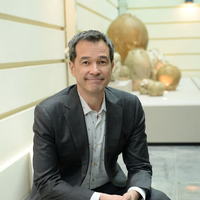
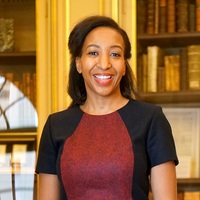
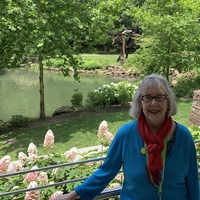

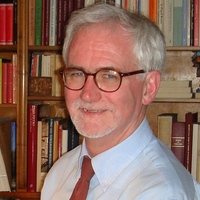

Uploads
Papers by Andrew McClellan
Rooted in new scholarship that expands established notions of art installations, museums, period rooms, and historic sites, the book brings together contributions from scholars from intersecting disciplines. Arguing that we are witnessing a paradigm shift concerning the place of historic spaces and museums in the contemporary imaginary, the volume shows that such institutions are merging traditional scholarly activities tied to historical representation and inquiry with novel modes of display and interpretation, drawing them closer to the world of entertainment and interactive consumption. Case studies analyze how a range of interventions impact historic spaces and conceptions of the past they generate. The book concludes that museums and historic sites are reinventing themselves in order to remain meaningful and to play a role in societies aspiring to be more inclusive and open to historical and cultural debate.
Revisiting the Past in Museums and at Historic Sites will be of interest to students and faculty who are engaged in the study of museums, art history, architectural and design history, social and cultural history, interior design, visual culture, and material culture.
Anca I. Lasc is Associate Professor of Design History in the History of Art and Design Department at Pratt Institute, USA.
Andrew McClellan is Professor of Art History at Tufts University, USA.
Änne Söll is Full Professor for Modem Art History at Ruhr-Universitat Bochum, Germany.
Rooted in new scholarship that expands established notions of art installations, museums, period rooms, and historic sites, the book brings together contributions from scholars from intersecting disciplines. Arguing that we are witnessing a paradigm shift concerning the place of historic spaces and museums in the contemporary imaginary, the volume shows that such institutions are merging traditional scholarly activities tied to historical representation and inquiry with novel modes of display and interpretation, drawing them closer to the world of entertainment and interactive consumption. Case studies analyze how a range of interventions impact historic spaces and conceptions of the past they generate. The book concludes that museums and historic sites are reinventing themselves in order to remain meaningful and to play a role in societies aspiring to be more inclusive and open to historical and cultural debate.
Revisiting the Past in Museums and at Historic Sites will be of interest to students and faculty who are engaged in the study of museums, art history, architectural and design history, social and cultural history, interior design, visual culture, and material culture.
Anca I. Lasc is Associate Professor of Design History in the History of Art and Design Department at Pratt Institute, USA.
Andrew McClellan is Professor of Art History at Tufts University, USA.
Änne Söll is Full Professor for Modem Art History at Ruhr-Universitat Bochum, Germany.